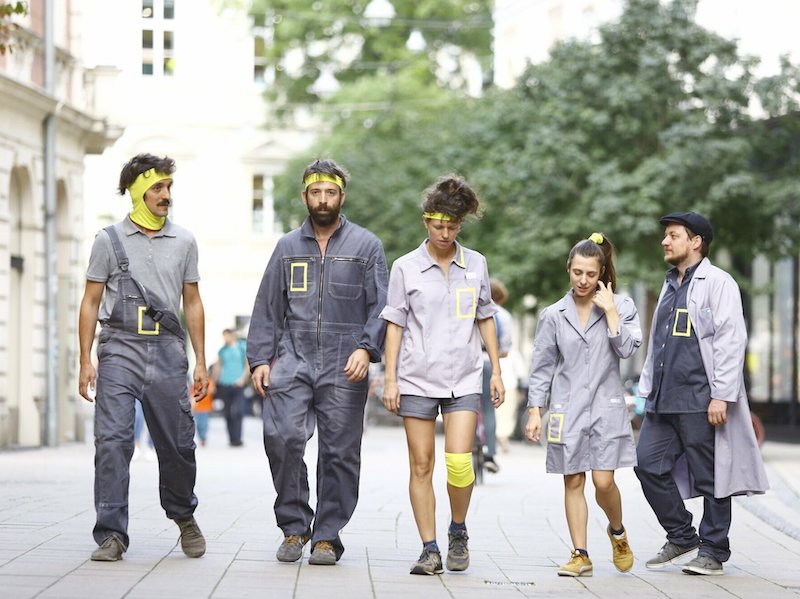 artists
artists
DIARY OF THE RESIDENCY OF “THE PLACE” AT MENU SPAUSTUVE IN VILNIUS, 2024
by Alina Stockinger (Eléctrico 28)
26/08/2024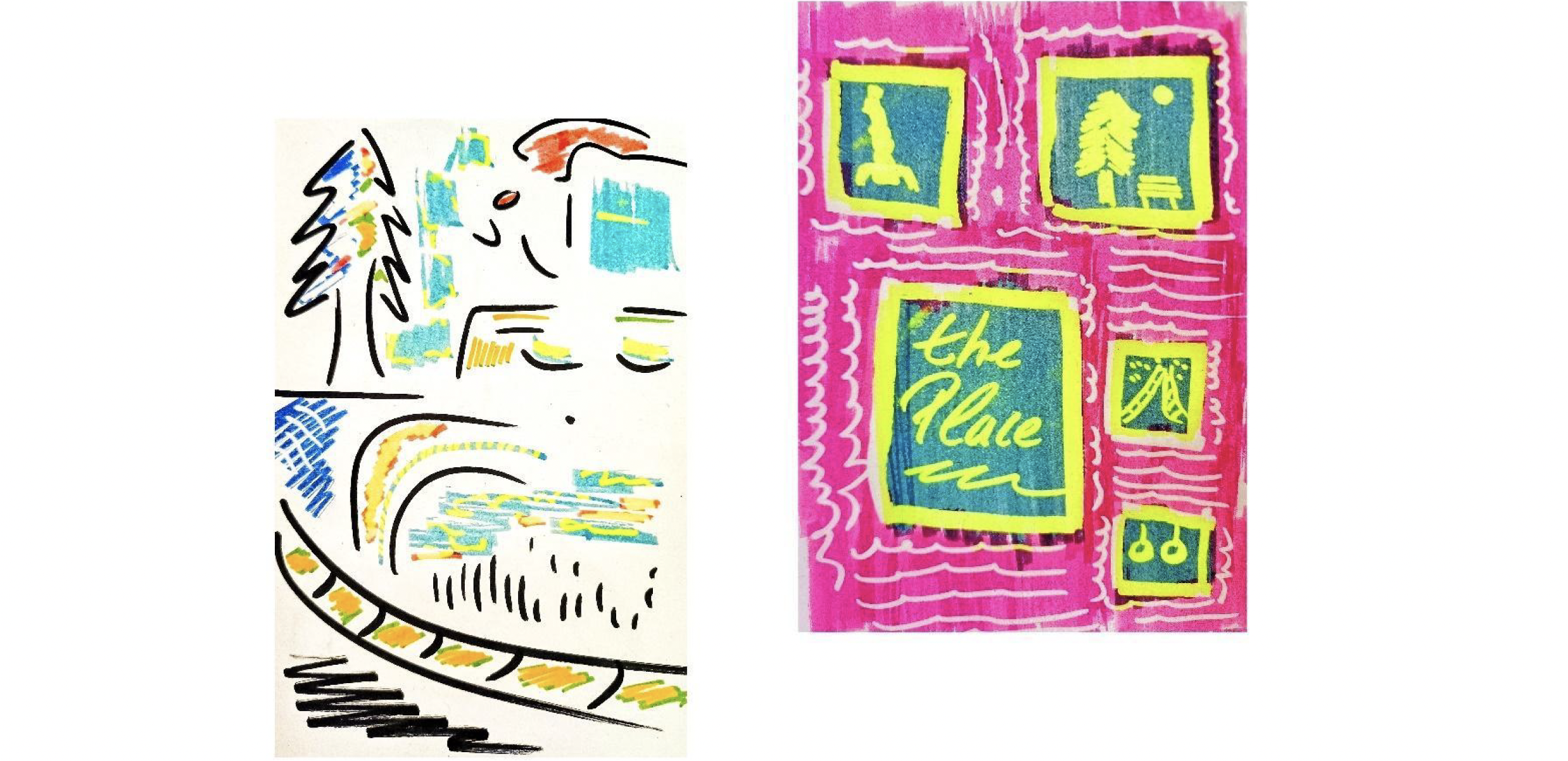
The Place is the new performative project of the artistic collective Eléctrico 28.
We have started working on it in spring this year, being very much inspired by the Hivernem-research-programme organised by Fira Tàrrega and Institut Ramon Llull, as well as by the project Deriva urbana: A part not a part from a place. The latter is an itinerant performance we developed and directed last year for the National Theatre in Rijeka and for Mittelfest in Cividale del Friuli.
The Place talks about the relationship we have and could have with the places we are in; not with those we remember because we have lived something important there, but above all, those we hardly notice. It makes us be in these places to discover if it is possible to feel anything similar to love for them.
The poetic and aesthetic approach we use is transversal, evident and animistic, building up on the premise that we cannot exist without places and that “life is passing from one place to another” (Georges Perec), but it is the way we do it that determines everything.
The performance aims at an intimate connection with its audience. We want people to actively experience connection to the place themselves, which is why a good number of try-outs are needed during the creation process.
Arts Printing House (Menu Spaustuve) and SPOT Festival have given us the opportunity to develop new material and try out what was already created so far with 60 people in a residential area in Vilnius. We are very thankful for the warm and extremely supportive and professional setting. At this point, we especially want to thank Gabriele Kundrotaitė from Arts Printing House and Judita Strumilaite from SPOT Festival.
The Place is being created by the Eléctrico 28 members Daniela Poch, Claudia Mirambell, Ana Redi-Milatovic and Alina Stockinger. The music and sound is being composed by Jakob Rüdisser. On this occasion, Josep Cosials travelled with us as an outside eye and Jonay PMatos was documenting the process visually.
Day 1 | ||
 |  | 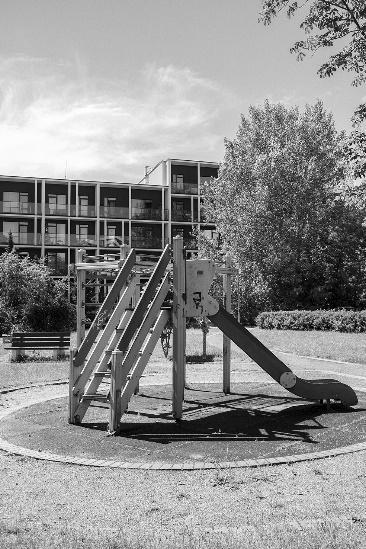 |
After a day of rain, the sun has come out today. We finally meet the place. It reveals itself in luminous shades of green. We are struck by the abundance of plants, the armies of cypresses and other bushes framing the place. There is a very young tree living right in the middle. It looks like a bush, but it is actually a young chestnut. We discover the elements we have seen on separate pictures and small videos and are surprised by their size and collocation. We understand that, in reality, things are always closer and smaller than they seem on video. The place is quiet. The loudest noise here is a choir of air conditions humming from the East end, standing together in the cellar of a black building with beautiful balconies (we see them through a little window full of cobwebs). This changes when the generator arrives with the technical team. The noise level of the place rises with our presence and the generator. We feel a bit like invaders and are extra friendly to people who cross or stay at the place. Two days later we will be asked to switch it off and Nikolaj, the technician, will reach out to the entire neighbourhood for electricity in order to keep the sound level low. Magically, the sound of the air conditioning-choir has stopped, although the temperature outside continues rising. During the morning, we observe dogs and humans coming here not leaving their excrements; maybe because a sign says so or because this is part of normal civic behaviour in Vilnius. The place is really clean. I think of the little green area in front of my house in Llinars del Vallès. I cannot remember a day without noticing the presence of excrements there. | ||
 | In the place, there are four benches that stand in four different positions, providing each a different perspective. If you sit on them, they are like hammocks, drawing you back. Difficult to get up from. One of the benches is frequently used by the neighbours, especially by an elderly couple we will meet in the afternoon. Another one becomes the wardrobe for our bags, water and clothes. All of them will serve in manifold ways for the performance: stage for better visibility, example of perception for spaces between things, headphone info point, etc. |
| There are two big holes in the ground. When you step inside, it looks like you are sinking or growing out of the earth. We have fantasies of the audience spraining their ankles there and decide to make the holes visible ourselves for both reasons: the image and the danger. | 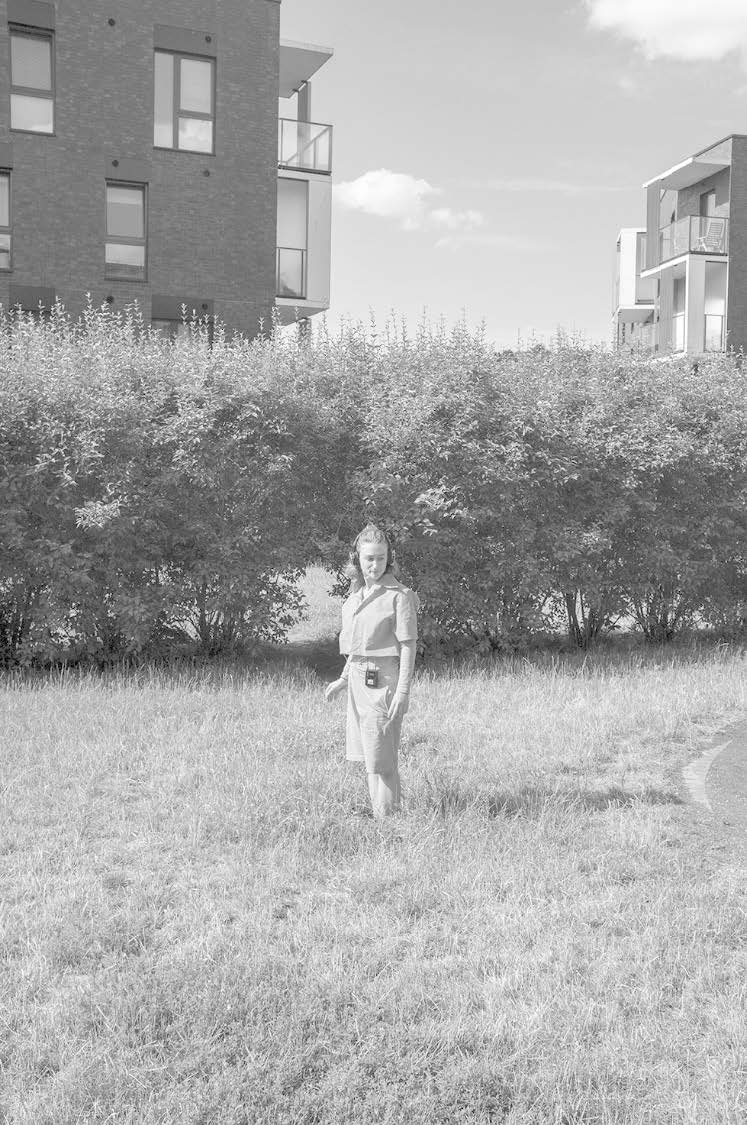 |
| There is a garbage bin that looks like a space shuttle and we wonder about the shapes of garbage bins in general. There is also the kind of “iceberg-bin”, which hides most of its body underneath the ground. The next day a vehicle will come to lift it to the surface and take the garbage elsewhere. | 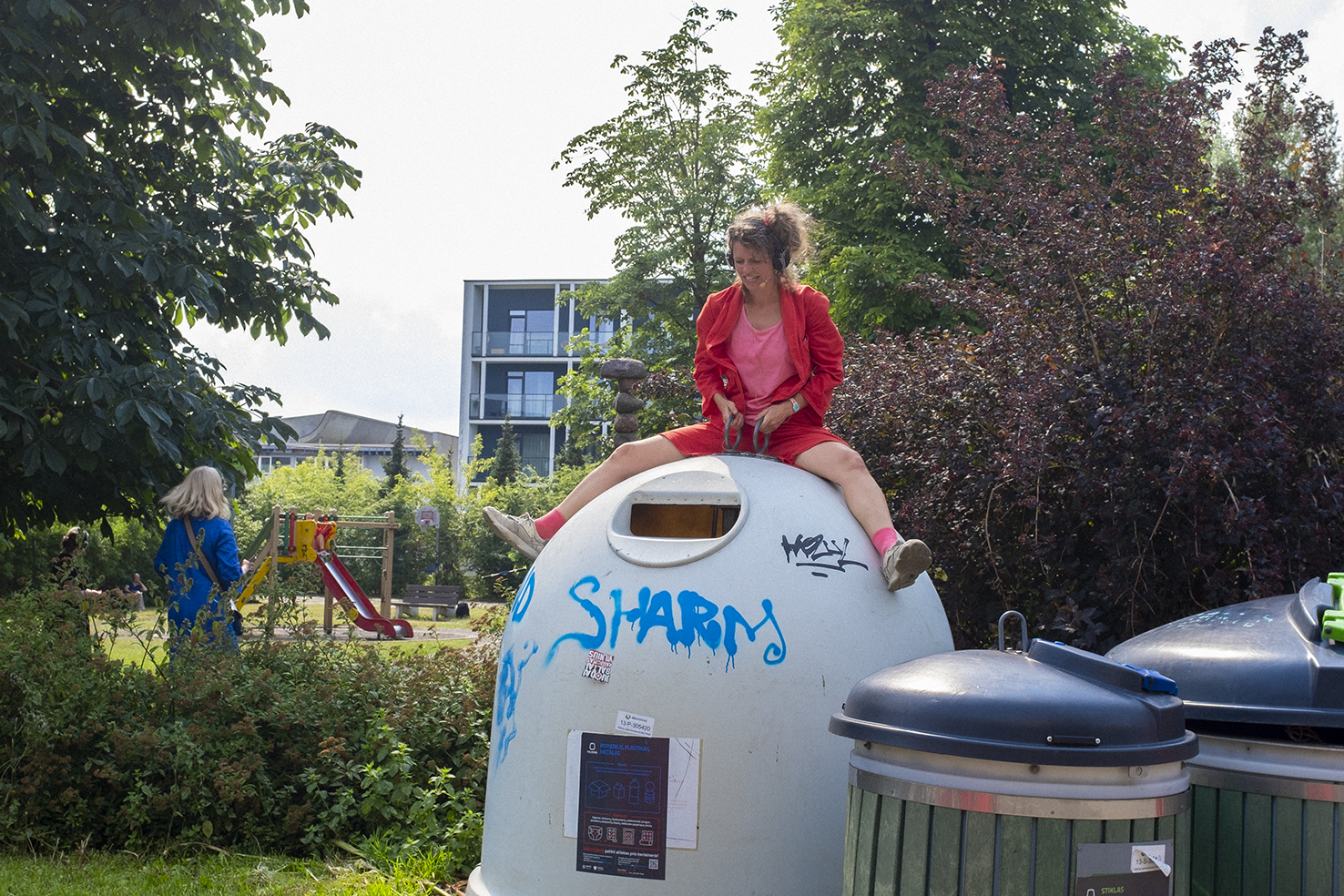 |
What else? We find the hair of a unicorn on the grass. Ana’s nose meets the nose of a Husky. We throw a chestnut that disappears without landing. | |
Day 2 | |
We try out a scene where we imagine interviewing a person from the audience while taking them on a little trip around the place in a strange vehicle, recording the sound of the conversation with a long rod and a furry microphone like in a film shooting. The image is nice and makes us laugh. However, we understand that a bike made for transporting two little children is not safe for even one average adult. | |
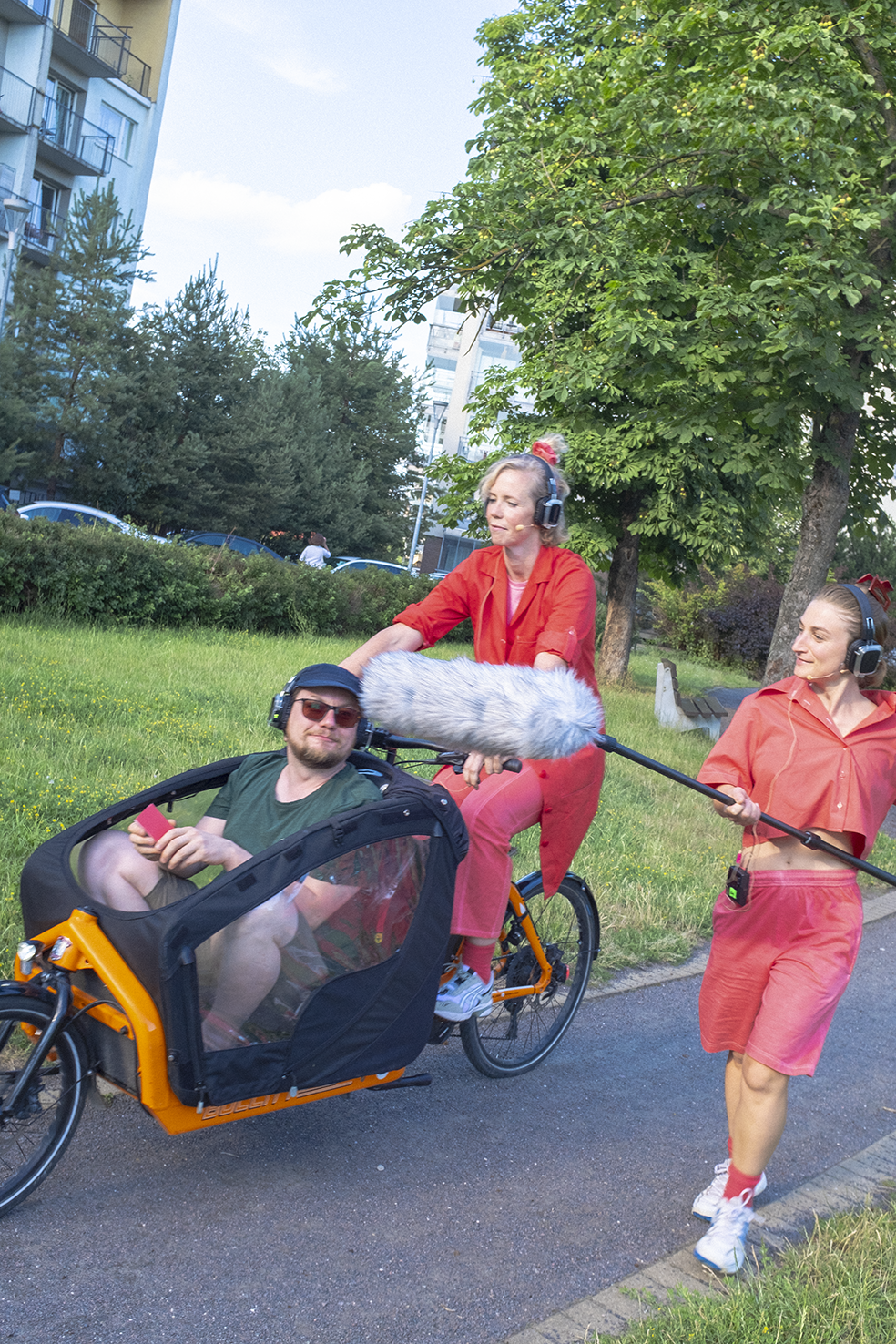 | 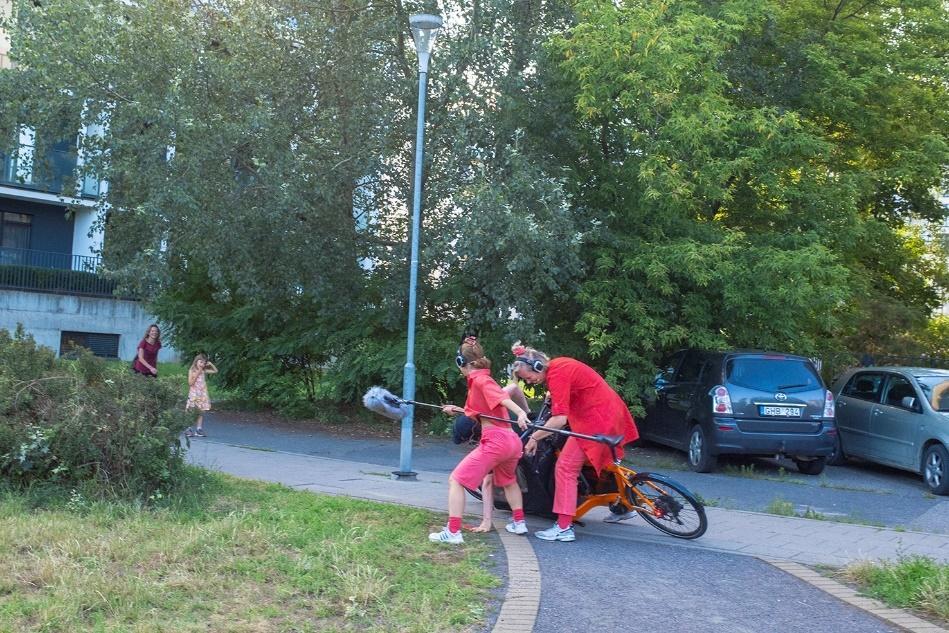 |
| Jakob (the average adult in the picture) comes up with the perfect song for a scene that makes us appreciate the collocation of elements. We wonder about the wall with its drainage, the pathway with its cypresses and the balcony with its dogs. All of them will find their way into the performance. | |
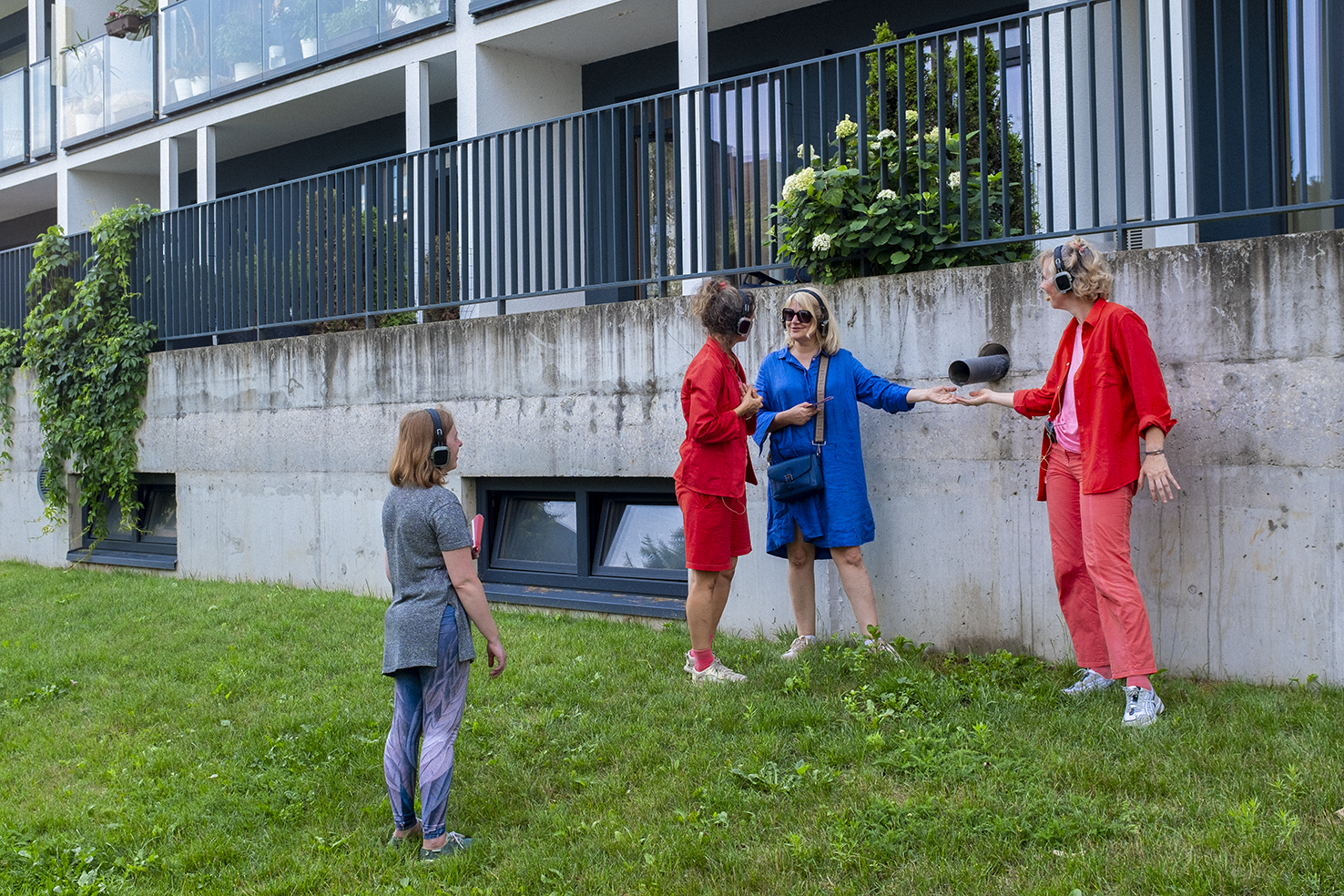 |  |  |
| What a bliss! We are not having technical problems as usual. And we do not have to set up or solve any technical issue by ourselves. If there is a little something not sounding the way it should, Nikolaj adjusts it or brings another microphone from Arts Printing House and voilá: the sound is amazing. The technical accompaniment and the high quality material make this residency stand out and allow us to focus on the artistic part completely. | 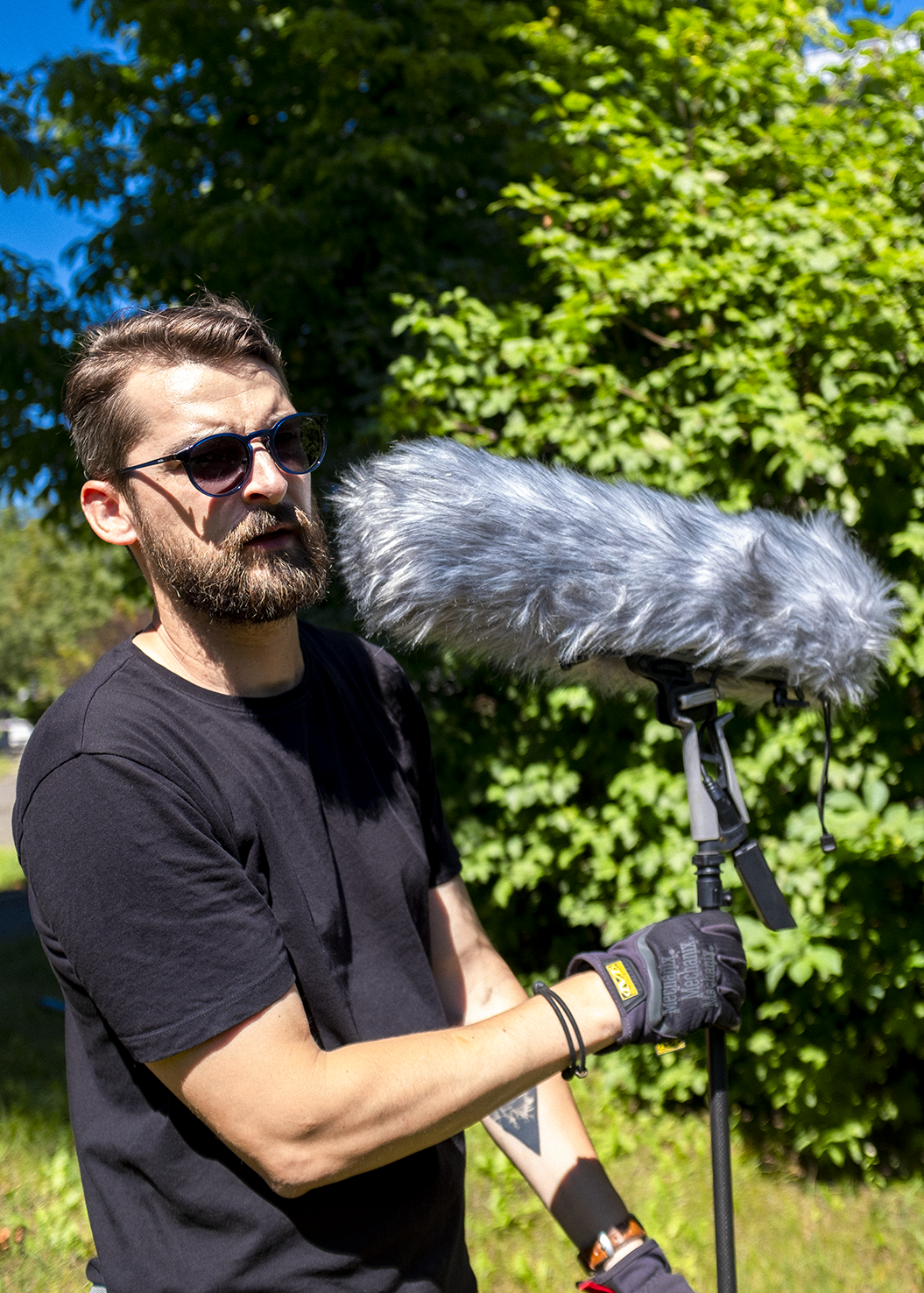 |
Day 3 | |
Lithuanian television comes to film our rehearsal and for an interview. “Why this place?”, they ask. We are still not sure about the answer. We say, “It is residential, not commercial, quiet, just a few people, there are places inside, little areas destined for distinct uses. It is watched by the houses built around. That creates a kind of tension that interests us. But it is a bit too beautiful, too clean.” Actually, we enjoy that it is clean and think about how comfortable it is to work in a place where you do not have to watch out for excrement, cigarette butts, broken glass and plastics in all shapes and stages of degradation. | |
| And today, the insight that creative residencies don’t allow for many other things that involve the brain (like writing this diary). We end the day late and very tired, with our brains smoking like chimneys. We walk to the city centre, eat some Lithuanian beetroot soup and dumplings and then we watch Spain playing in the semi-finale of the European Football Championship to disconnect completely from the intensity of the creation process. And just like most people in Vilnius, we go to bed early. | 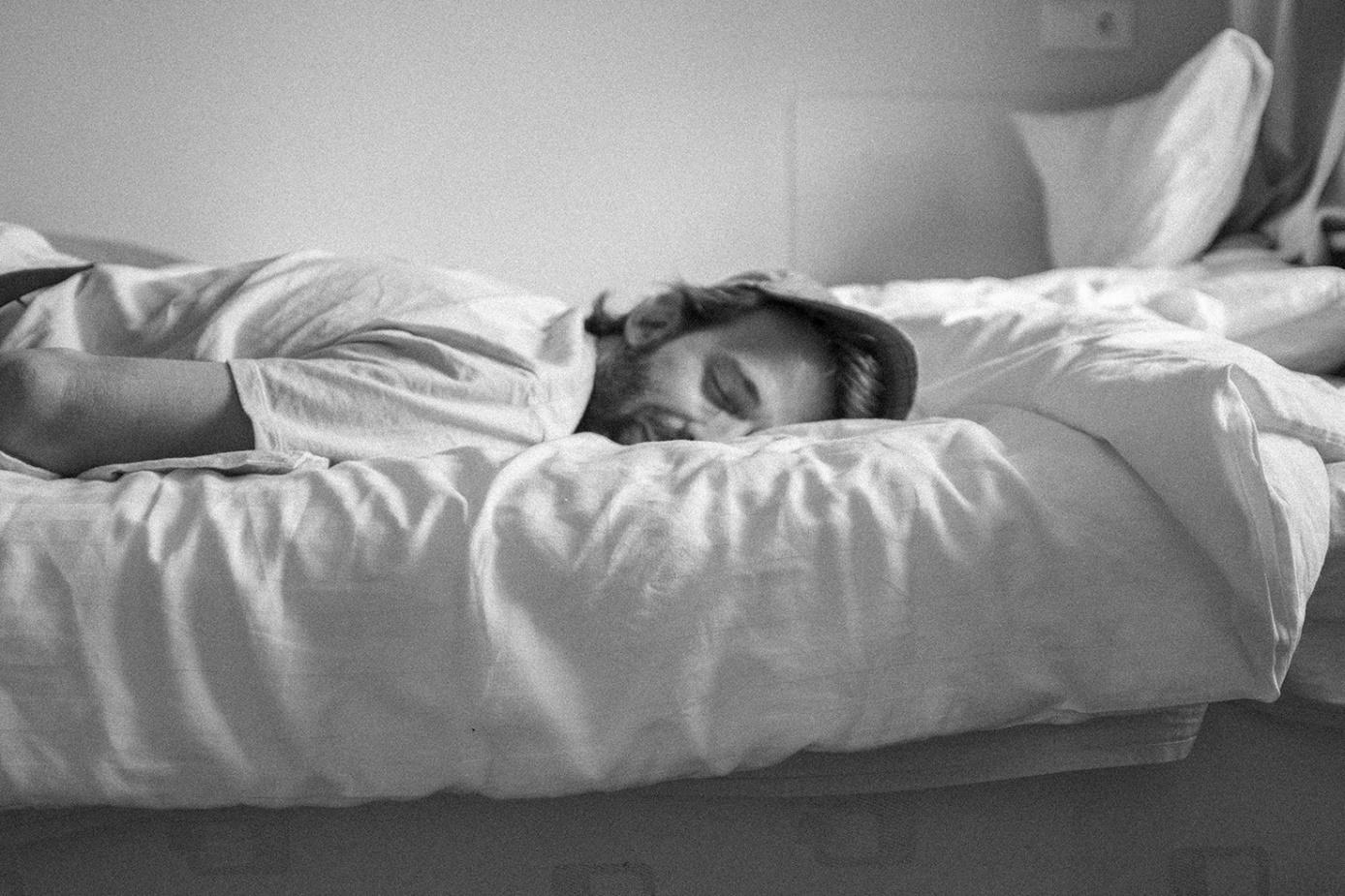 |
Day 4 | |
The bonding with the place is happening. Every day, it feels more like our place, too. We are becoming a part of it almost. We really like being here and people already recognise us, they know why we are here thanks to Auguste, the volunteer that spends some hours of her day with us every day. Her translations allow us to have some little conversations with the neighbours that speak Lithuanian. Together we find out things about its past. Like that the stone statue is actually the final university project of an artistic sculpting class. That is not written anywhere and people do not know it. The place is too new, everyone moved here just about a decade ago. We find a resemblance between the sculpture and Ana’s spine. Jonay, who came to document the process with his camera and pencils, felt inspired to make some drawings of it. | 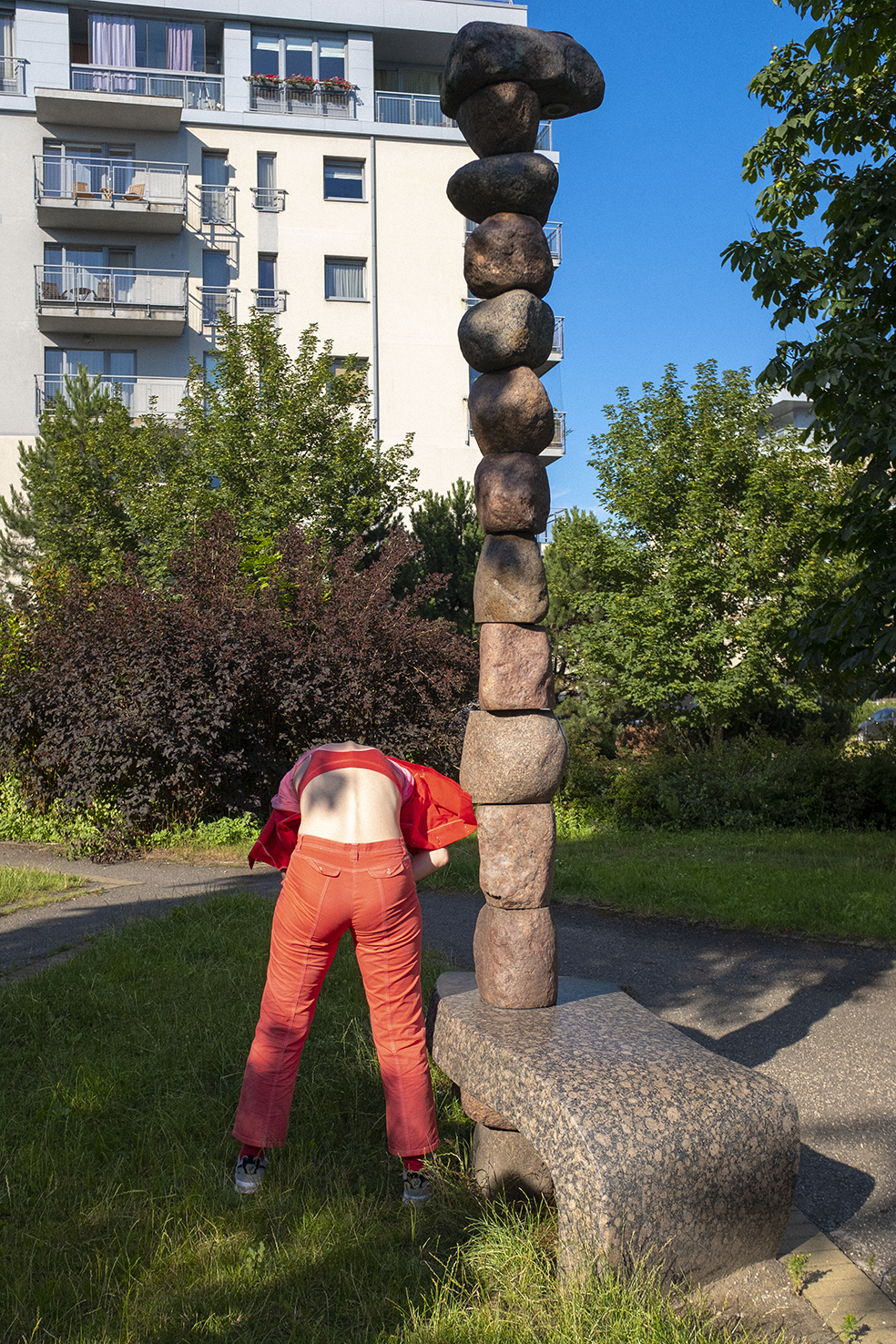 |
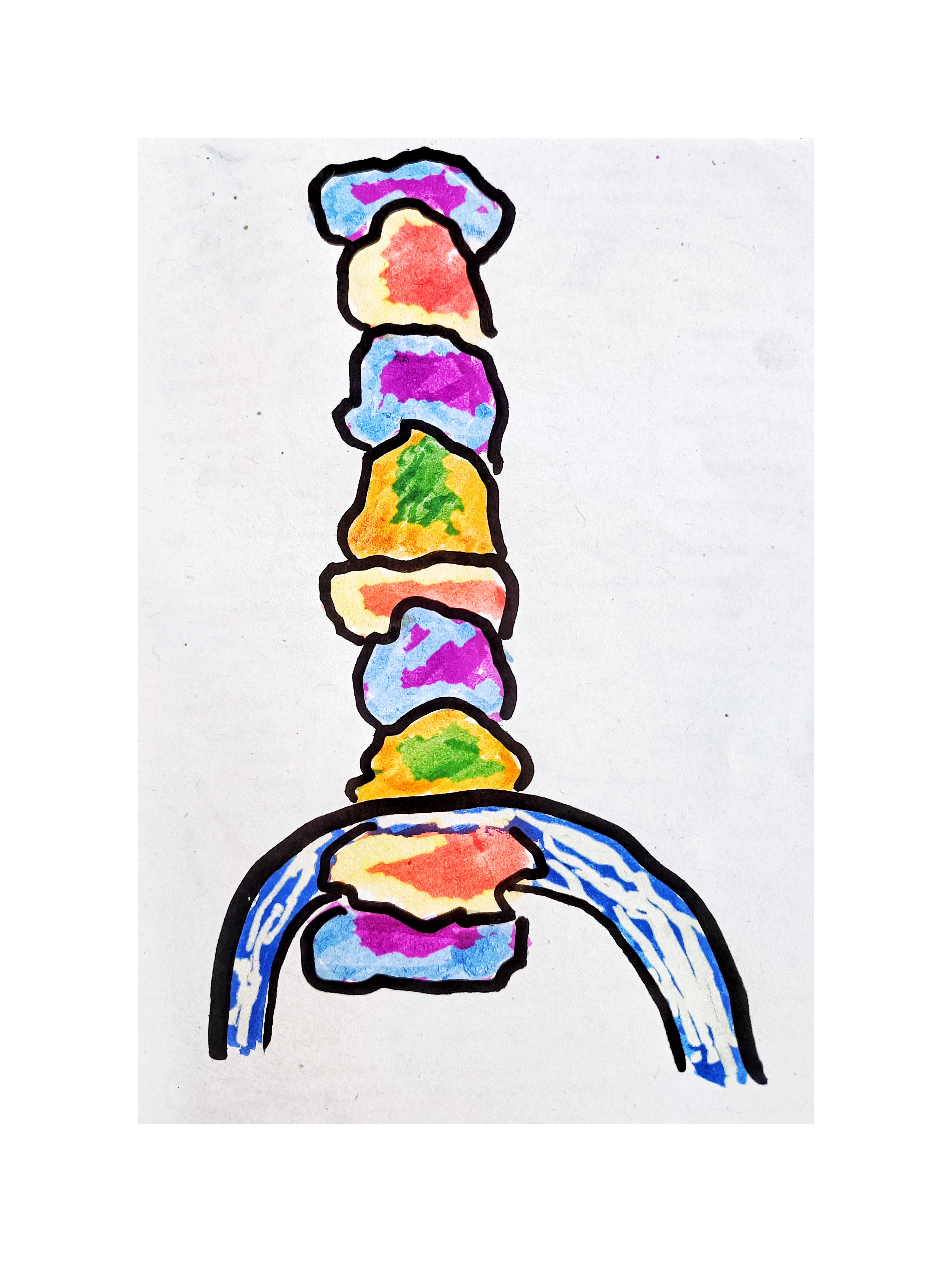 |  |
Day 5 | |
The day of our first try-out with an audience has arrived. 60 people cover approximately half of the place’s surface with their bodies. Although we imagined that the augmented human presence would change the place significantly, now we understand the real impact. Suddenly, people make up the place just as the grass, the trees, the pathways, the benches, the sculptures and the playgrounds. The place is crowded, somehow saturated but it is yet visible and palpable. It shines through and around. We perform and feel very much what is working and what is not. We feel that people like what is happening, in general, although some seem a bit lost at times. Some are there without a headphone, unexpectedly. They of course perceive another type of performance. A question to tackle in the future: how to handle this “other” audience. | 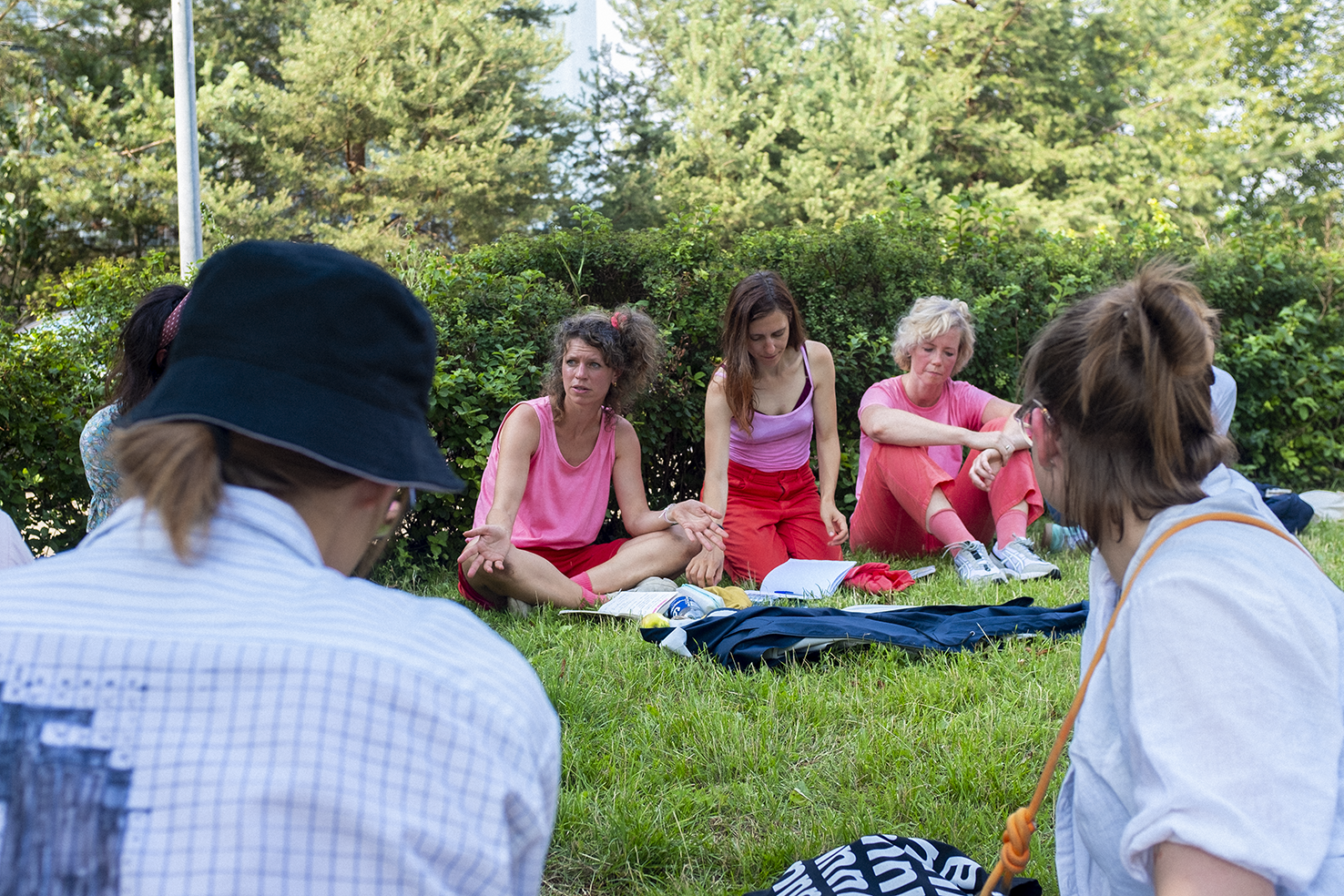 |
| After the run, we invite people to stay for a talk. About 20 people stay. They say they "felt like a child, looking for the details of the place", "appreciating small stuff, everyday life, perspectives", "stopping and having time", "enjoying watching other people in their places, how they relate". They suggest more guidance because they sometimes did not know when to stop and when to follow us. Also they were not sure whether their participation was wanted or not. They wanted to participate more, have more time to discover things themselves with our help. Very useful comments for us. | |
Day 6 | |
Feedback with Josep and Jakob in the morning. We recall the wishes and suggestions of the audience and share our own sensations. We decide to change many things and go to the place to rehearse. We make a different beginning. We eat quickly, right at the place, and then leave it to warm up in a place close that we share with some snails, some plants growing in between the pavement and some parked cars. We let the audience arrive on their own to the second run at 3pm- and 35 degrees. We perform in a different way this time. Closer, less formal and with more flow. We are more connected and notice the audience is connected, too, even though the heat makes them seek shelter in the shade. All the new things work out and we finish off with a very positive sensation. We go for the second round of feedback, this time a special one, listening to and answering the questions of the young critics’ programme of SPOT Festival. They tell us they feel “triggered to rethink places” and even “angry at urban planners”. They love the multiple perspectives, the intrigue of someone watching at the beginning and the personal and very intimate experience at the end. One tells us not to touch the end, that it is just perfect. We ask, “What do you think this performance is about?” and they say “life, the environment near to us”, “about connection, about paying attention to ourselves and where we are”, “about relations and about existence”. And that it is so beautiful to see people really relating to places. Here are some impressions of the two runs with audience: | |
 |  |
 | 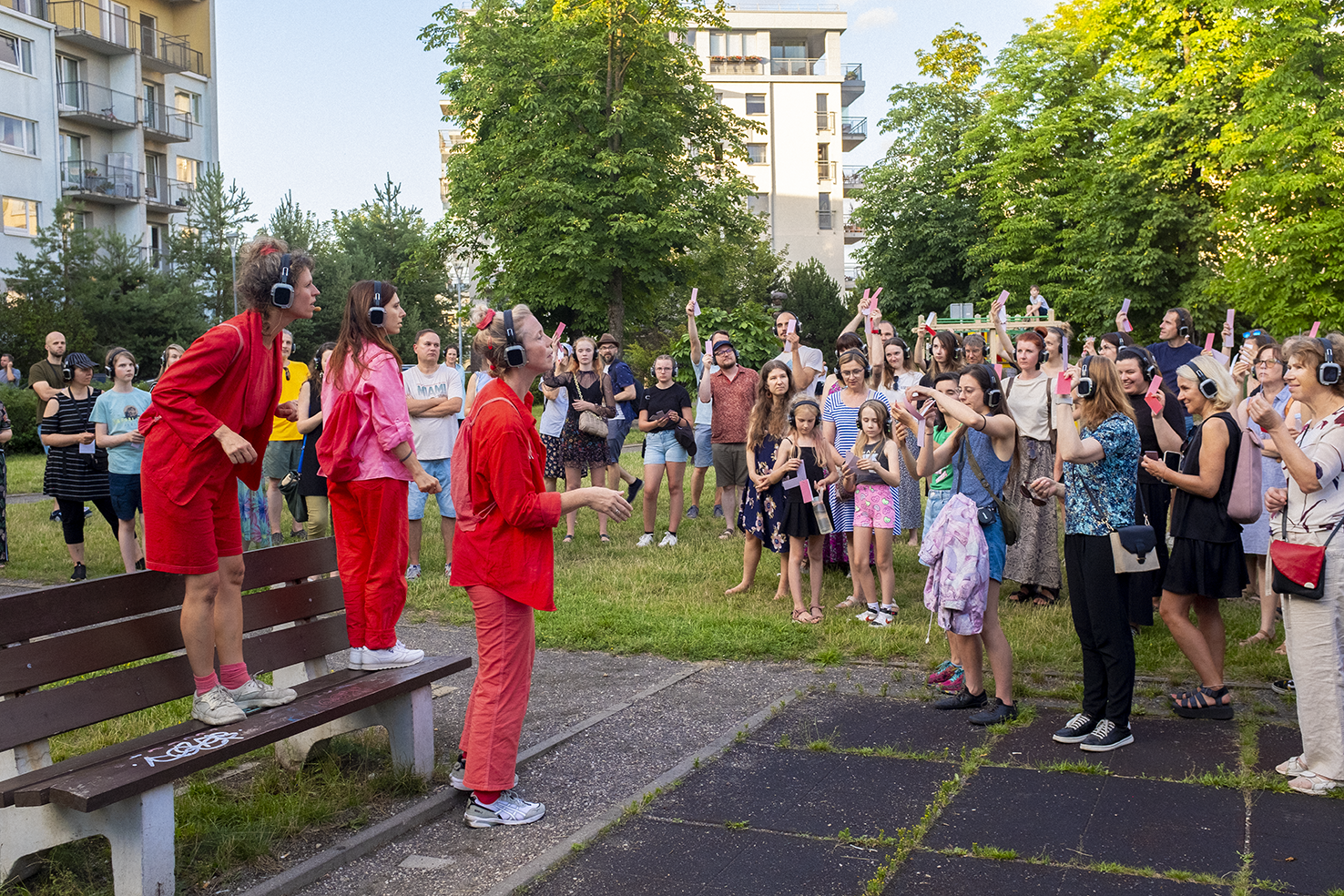 | 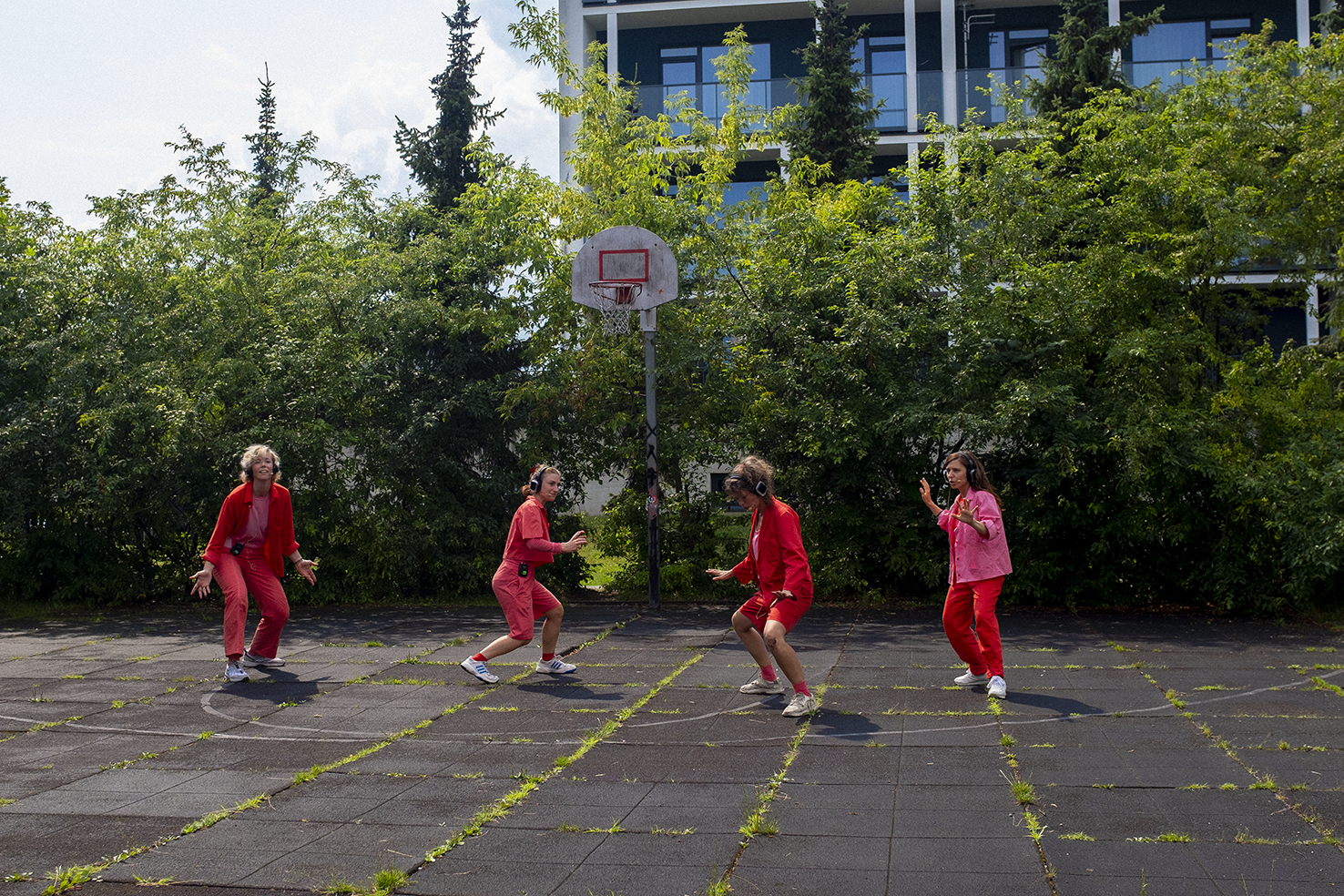 |
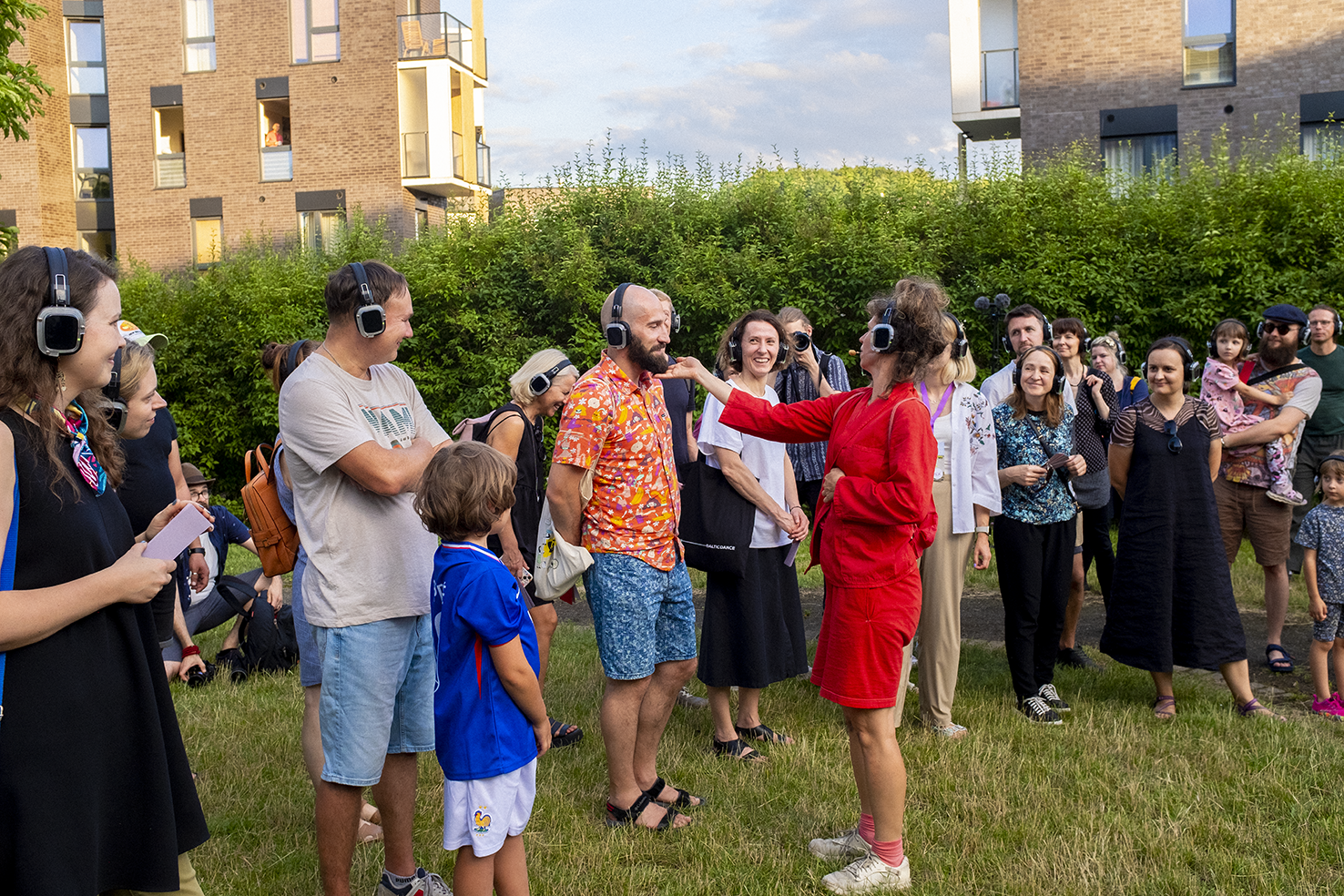 | 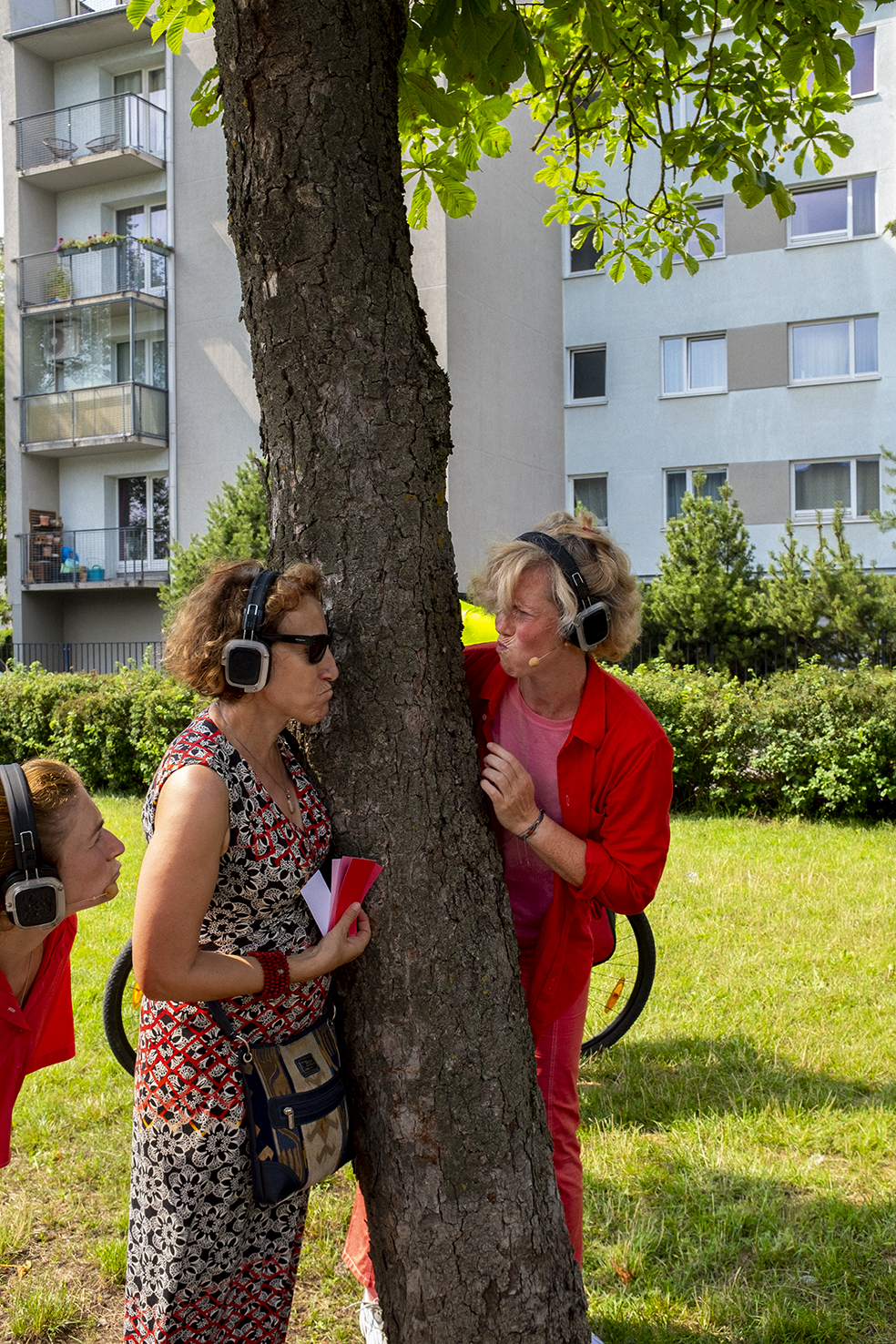 |
 |
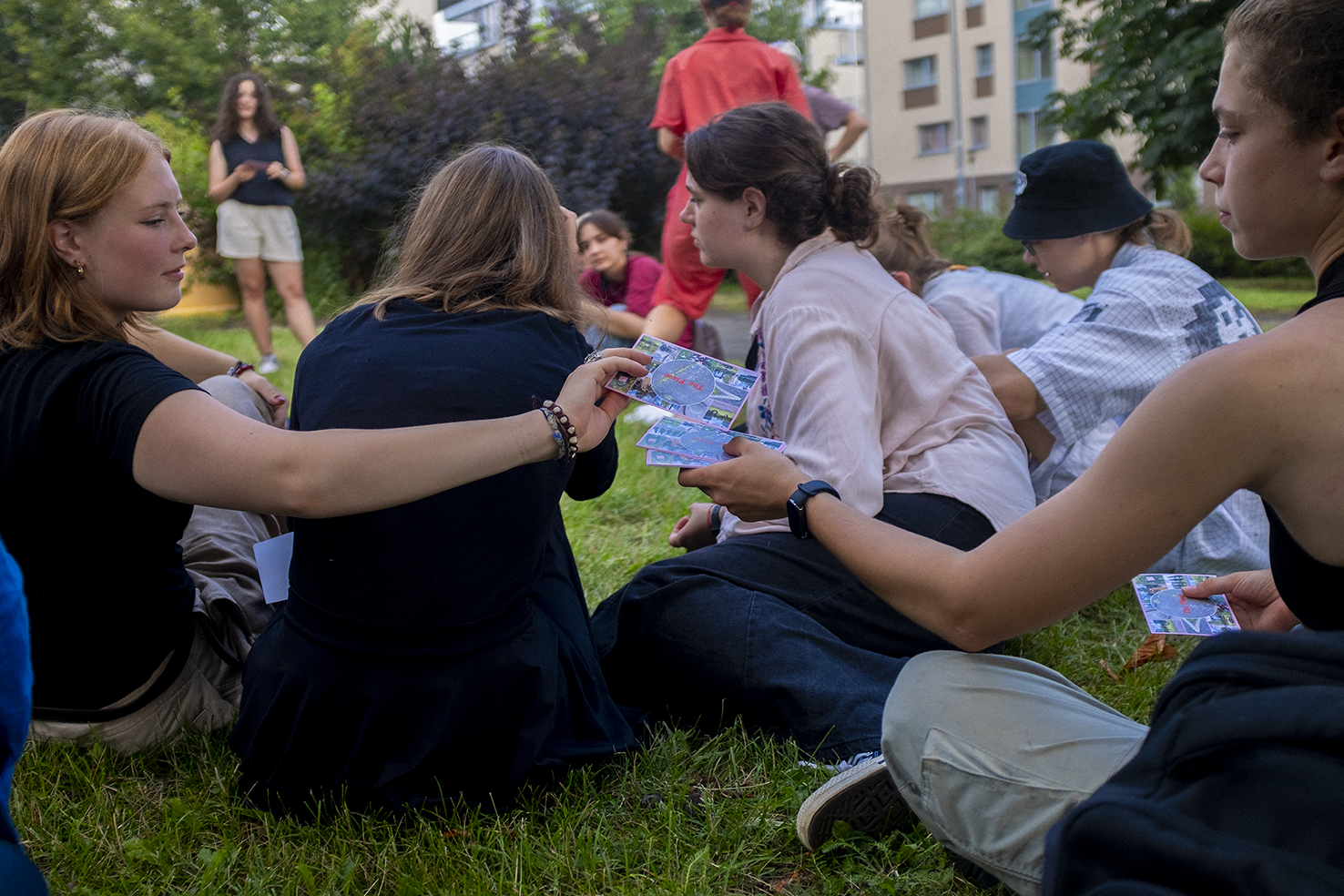 | 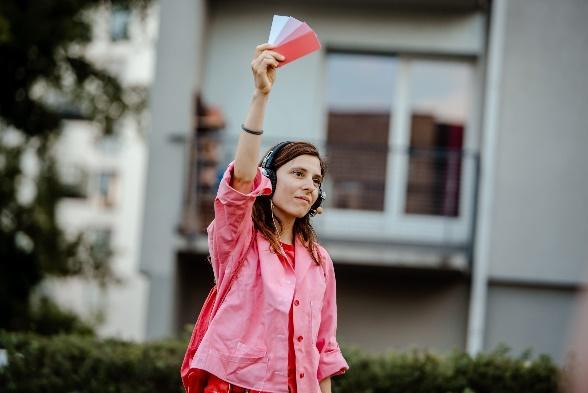 ©Dainus Putinas ©Dainus Putinas |
Day 7 | |
We leave Vilnius with the sensation of having made a huge step inside of this creation and of being on a good path. We now know that 60 people is the maximum for this performance. We know which sound equipment is the optimum. There is a lot of work still, many dramaturgical aspects to rethink and sort out but, nevertheless, we are really happy at this interim stage of creation, looking forward to the next try-out with an audience in October in Barcelona, at the Festival Escena Poblenou. | |
| All illustrations and pictures but those marked differently by JONAY PMATOS. | |
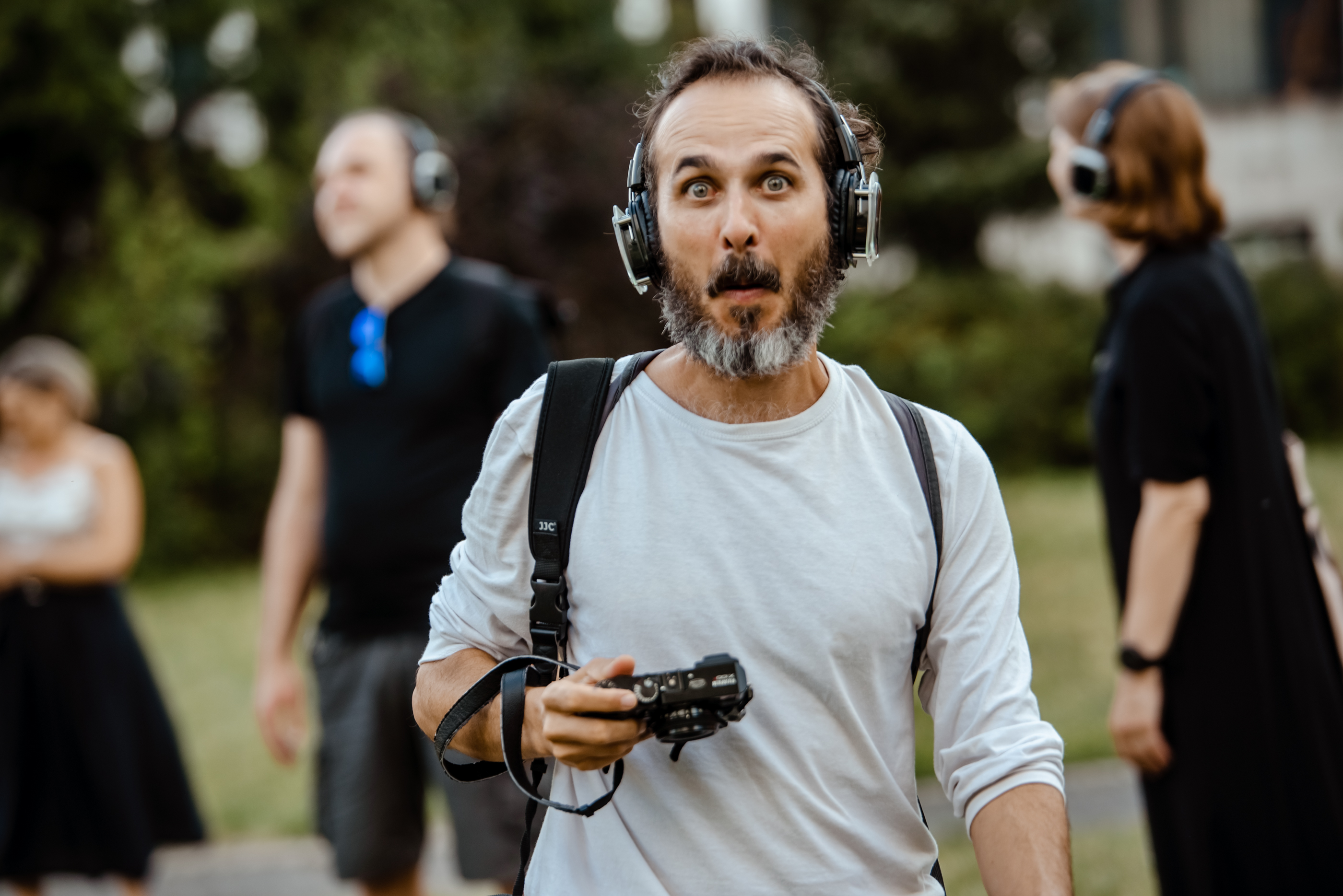 Jonay PMatos portrayed by Dainus Putinas. Jonay PMatos portrayed by Dainus Putinas. |
